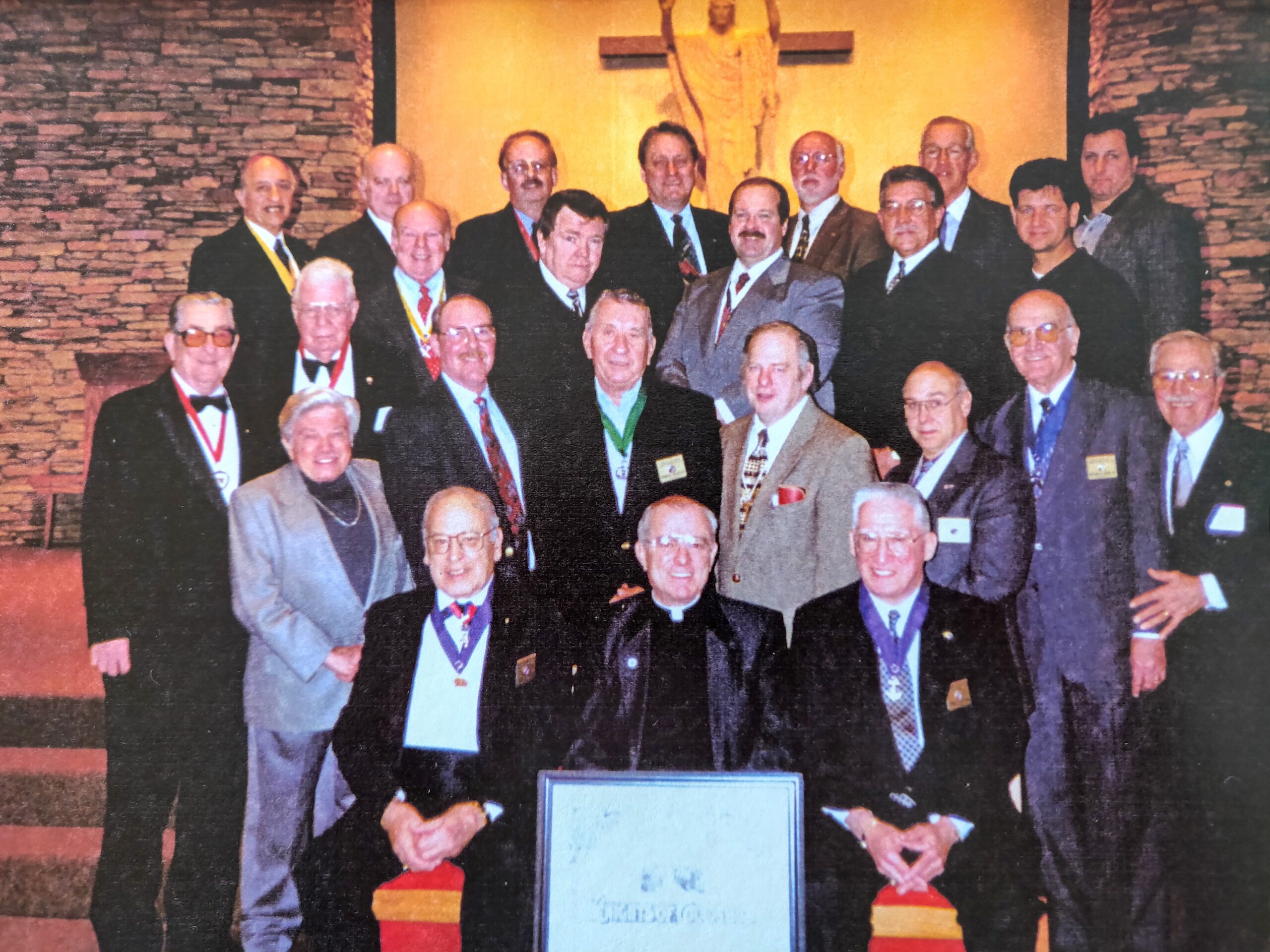St. John Neumann Council 12532
Based in Lancaster Pennsylvania, the St. John Neumann Knights of Columbus works in close collaboration with its parish in order to support charities in the local community. Council 12532 has 170 active and hard working members that support a multitude of committees and programs. The St. John Neumann Council is a three time recipient of the Star Council Award and a one time recipient of the Double Star Council Award, Columbian Award, and Founder’s Award.
The first meeting of St John Neumann Council 12532 was held on Tuesday, August 15, 1999, at Saint John Neumann Church, the council’s new home. Nominations to select council officers were made, elections were held, and Robert L. Peters Sr. was elected to serve as the council’s first Grand Knight.
On Saturday, January 29, 2000 at the 5:30pm mass celebrated by Monsignor Richard A. Youtz, the Pastor and also Chaplain of Council 12532, State Deputy Robert J. Cherenyack, on behalf of the Supreme Council of the Knights of Columbus, presented the Council Charter, dated August 15, 1999 to Grant Knight Peters. The Charter listed the names of the thirty-four charter members.

First Row – Albert L Sabatine, Rev. Msgr. Richard A Youtz, Robert L Peters Sr.
Second Row – William F Albright, Reginald Eggerstadt, Joseph E Gray, Wayne S Moyer, Robert B Biggs, Patrick A Autrey, Charles A Mayo, Mevin A Hessler, Pat R Troccoli
Third Row – Edwin J Quinn, James Bracken (non-charter member), Richard A Klein, John J Beck, Raymond J Kilmer
Fourth Row – John M Viscardi, John C Sanbower, Mark R Montauk, Dennis H Anspack, William H Allison, John Corcoran (non-charter member), Gerald N Sauers
Charter Members not present for Photo – Paul S Augustine, Joseph J Bland, James P Burbrink, Peter E Forlin, Anthony J Grochowski, Wade C Hulshart, William S Karl, Michael V Kowalick, Patrick J Laughlin, Robert C Lowe, Dennis T Penny, David J Sabado
The Knights of Columbus
Late-19th century Connecticut was marked by the growing prevalence of fraternal benefit societies, hostility toward Catholic immigrants and dangerous working conditions in factories that left many families fatherless. Recognizing a vital, practical need in his community, Father Michael J. McGivney, the 29-year-old assistant pastor of St. Mary’s Church in New Haven, Conn., gathered a group of men at his parish on Oct. 2, 1881. He proposed establishing a lay organization, the goal of which would be to prevent Catholic men from entering secret societies whose membership was antithetical to Church teaching, to unite men of Catholic faith and to provide for the families of deceased members.
As a symbol that allegiance to their country did not conflict with allegiance to their faith, the organization’s members took as their patron Christopher Columbus — recognized as a Catholic and celebrated as the discoverer of America. Thanks to Father McGivney’s persistence, the Knights of Columbus elected officers in February 1882 and officially assumed corporate status on March 29.
In addition to the Order’s stated benefits, Catholic men were drawn to the Knights because of its emphasis on serving one’s Church, community and family with virtue. Writing in The Columbiad in 1898, a year before he was elected supreme knight, Edward L. Hearn wrote that a Knight should live according to the virtues of loyalty, charity, courtesy and modesty, as well as “self-denial and careful respect for the feelings of others.” Fraternity and patriotism were added to the Knights’ founding principles of charity and unity in 1885 and 1900, respectively.
Learn more about the history of the Knights of Columbus here.